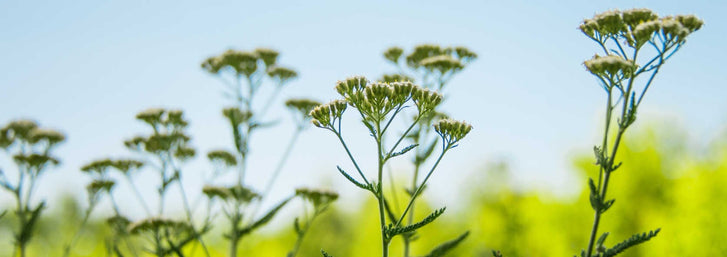
Jordan Freytag

Now is the time of year that folks are sowing seeds outdoors and transplanting indoor plant starts. Many beginner or inexperienced gardeners would like a clear-cut date and time that is best to sow and transplant. Unfortunately, it just doesn’t work like that. But no worries—you don’t have to break your brain trying to be the “perfect” gardener. Just understanding a few basics and taking it easy will keep gardening an easy-going and fun practice that will pay off!
- Knowing the estimated frost date and being aware of the weather patterns of your area will help you know when the weather conditions are right for planting. Keep in mind the frost date is an estimate based on historic averages and not intended to be a firm date. A general rule of thumb is to wait until nighttime temperatures are at or above 50° F for two weeks. Then it’s good time to start your sowing and transplanting. Keep in mind to TAKE YOUR TIME; you don’t have to plant everything in one day. It’s even recommended that you plant sporadically over the course of a few weeks. In addition to spacing out your harvests, spacing out your planting increases your odds of growing successful crops or minimizing your losses—depending on if you are a glass half full or half empty kind of person!
- Soil should be light and fluffy, still holding moisture but not wet and clumpy. Checking your soil moisture is actually a fun activity. Roll your soil into a ball and drop it on the ground. If the ball crumbles evenly, your soil is ready. If it breaks into clumps or in halves, your soil is still too wet. Kids tend to like doing this, and they learn something while doing it. Tilling wet soil can disrupt the soil structure so wait until soil passes the ball test.
- Garden vegetables like Eggplants, Tomatoes, and Peppers are almost always sown indoors and are transplanted after the “hardening off” period, whereas Cucumbers and Summer Squash are generally sown outdoors. “Hardening off” is the period of time when you slowly introduce your plants to the outside elements. It should last roughly two weeks. Start in the shade and move into the sun. Keep your soil moist but not soaking while “hardening off”, and saturate soil immediately after planting. Transplant in the morning or on an overcast day as to not shock the plant with too much sun and heat.
If you think you may have planted too early or if the weather in your area is becoming unruly, try using plant protectors to ensure plant survival. It acts like a mini greenhouse, protecting your transplant or early-sown seed against the unpredictable cold nights.
Happy Planting!
Leave a comment
Your email address will not be published. Required fields are marked *
4 comments
gzexcaydem
Muchas gracias. ?Como puedo iniciar sesion?
wqucrkjpjc
Muchas gracias. ?Como puedo iniciar sesion?
upgpepmcdb
Muchas gracias. ?Como puedo iniciar sesion?
hcvyagwpej
Muchas gracias. ?Como puedo iniciar sesion?
Further Reading

10 Natives of the Southwest USA for Pest Control
Written By Lara Wadsworth The Southwestern United States is a region incredibly unique to the rest of the country. The hot, dry weather can be challenging for plants and animals to thrive without additional help. That is why gardening with natives can ...

Ashleigh Smith
2024-04-157 min read0
Spring Into Action - Celebrating Earth Day
Written By Chelsea Hafer Spring is quickly arriving, and that means that Earth Day is near! Earth Day is the perfect occasion to appreciate our wonderful planet and all that it does for us and think of ways you can give back to it. In this blog post, w...

Ashleigh Smith
2024-04-154 min read0
Everything You Need To Know About Rain Gardens
Written By Lara Wadsworth Rain gardens are quickly gaining popularity for their perfect marriage of utility and beauty. What simply looks like a beautifully landscaped garden is actually a native habitat that serves as a storm drain and water sponge. B...

Ashleigh Smith
2024-04-085 min read1
Northeastern Natives for Attracting Beneficial Insects
Written By Lara Wadsworth The Northeastern United States is rich with American history, but did you also know that it is rich in plant biodiversity? Nature has learned through time how to work in harmony with the various species that attempt to thrive....

Ashleigh Smith
2024-04-086 min read1



